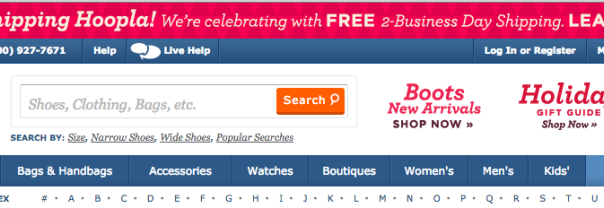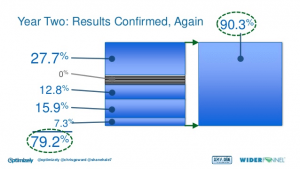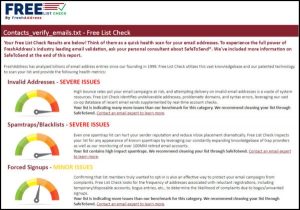
I was reading this morning that an interesting statistic that “almost 69% of online shopping carts that contain at least one item are later abandoned, according to the Baymard Institute, an e-commerce consultancy based in Copenhagen which analyzed 31 studies over the past few years. That is up about three percentage points from 2012, says Christian Holst, the institute’s co-founder. So how do we marketers overcome this shocking stat to ensure profitable growth?”
That’s a lot of money left on the proverbial table and it’s keeping many a retailer and e-commerce company awake at night. While this isn’t a new problem, it is one that seems to be getting worse not better.
Let’s Frame The Shopping Cart Problem
Simply put, the self-educating buyer is the problem. These self-educating buyers have fundamentally changed the rules of sales and marketing. They don’t buy the way were used to selling. This quote in today’s Wall Street Journal sums it up perfectly.
“I do a lot of research,” says Ms. Sprague. Before buying something for her children, she bounces from bloggers’ product reviews to retailer websites to digital price-comparison tools.
Yet, when you consider how today’s marketers are addressing the shopping cart abandonment problem, you find by and large the choose a singular tactic – badgering.
Many factors lead shoppers to abandon their digital shopping carts. Baymard Institute’s research found these shopping cart abandonment rate statistics:
- 33% – Unexpected extra costs at checkout—sales tax, shipping fees
- 23% – Shoppers are forced to create an account
- 18% – A “complicated” checkout process.
Based on data like this — and this isn’t the only data I’ve seen that supports this point-of-view, I would posit that the solution to shopping cart abandonment lies not so much in repetition but in research.
Because, while this data would suggest that shopping cart abandonment is a rational act I would counter that these are simply hurdles that a consumer was unwilling to jump in order to buy the product or service. The number one reason a shopping cart is abandoned, is really very simple and doesn’t require research to figure out.
Shopping carts are abandoned when the consumer is not committed to buying your product from YOU TODAY.
Everything else is just a rationalization or excuse for failing to buy at that moment.
Badger Marketing
The same Wall Street Journal article went on to discuss various marketing tactics employed by e-commerce sellers. The tactics included retargeting ads on places like Facebook, display ads on other websites, follow-up emails, and in some cases text messaging.
This is what I call badger marketing. And while I’m sure at some level this works, otherwise smart marketers would discontinue the practice, it is based on the same historically flawed marketing model that far too many have followed for far too long – carpet bomb the consumer into compliance. It’s the same old reach/frequency model that has dominated advertising thinking for long as I’ve been in the business.
But look back at those numbers and the #1 reason for shopping cart abandonment that I proffer. And ask yourself, with those numbers and my theory (if you concur) is Badger Marketing really going to work?
The terrible truth is the days of being able to beat our customer into submission are over. In a world where the other option is a mere click of a mouse away consumers do not have to to buy today or from you. And simply reminding them that they failed to complete a purchase or bombarding them with ads for the product they didn’t buy is simply going to antagonize that consumer.
Research Marketing
Instead of taking the easy way out and throwing money at the problem in the form of more and increasingly sophisticated ads, marketers need to commit to solving the real problem. But this will not be easy nor will it be fast, but it will be a cost-effective long-term solution to a problem that’s not going to go away. We have to invest in processes, systems and tools that allow us to immediately understand why a consumer abandons their shopping cart.
I love what Zappos does because it’s a step in the right direction.

Visit their site and you will quickly see that their phone number is on every page (right above the logo) and readily accessible to any consumer. They do that for a reason. They want a consumer to call if there is a question or problem or really any hurdle to closing the deal. True this surely costs Zappos more money to hire operators and man call centers, but the more important question is does it result in a higher sales conversion rate and a reduction of shopping cart abandonment? I suggest that in their mind, Zappos considers this cost a marketing expense, which when you think about it, it really is. Does it work? I don’t know but I’m guessing yes since they keep doing it and seem committed to the practice.
The trick to creating successful Research Marketing efforts is going to be getting the consumer, at the exact moment of choice, to answer the question, “Why are you leaving?”
I think this is going to require more than a simple pop-up. It may require real-time researchers, real people who are stalking the website looking for that shopping cart abandonment moment so that they can initiate a proactive 1-1 chat. Something that’s clearly not automated but is the online equivalent of a store manager stopping the consumer on the way out of the store after noticing that consumer just failed to purchase an item they were looking at it longingly.
Stopping them to ask, “excuse me, I was just curious, I saw you looking at the shirt but you didn’t buy it… why?”
The consumer confronted with this question by a real person feels more obligated to provide an answer and more importantly an honest answer. But that same consumer confronted with an obviously automated pop-up feels no obligation to respond.
We’ve been trained to ignore automation.
So the solution isn’t yet fully defined but the goal is plainly obvious. Marketers must use research to understand how to position their products and services as must-have items. And when a consumer indicates failure to achieve that goal (via an abandoned shopping cart) take immediate steps to understand where the product or marketing is falling short.
Digital & Social Articles on Business 2 Community(98)
Report Post






